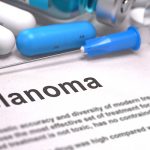Mohs surgery has a 98 to 99 percent success rate on average tumors. It is also one of the most common surgeries to perform on skin cancer areas. This procedure is the most effective way of removing basal cell carcinomas and squamous cell carcinomas. Your surgeon will remove parts of the tumor and skin with a surgical blade and then send it for immediate testing. The surgery happens in stages, including lab work, waiting time, and surgery by qualified and skilled surgeons and pathologists who help spare as much healthy tissue as possible and leave the smallest possible scar.
This procedure took root in the late 1930s by Dr. Frederic E. Mohs as chemosurgery. It took 30 years before Dr. Perry Robins saw its true potential in the dermatology field. Robins decided to teach this procedure at New York University. From there, he established the first fellowship training program to teach dermatologists how to perform the Mohs surgery on skin cancer patients. After starting the program, he continued to develop the surgery as well as travel and teach it all over the world.
People undergo Mohs surgery if they have a high-risk recurrence, have areas like the nose, genitals, eyes, mouth, hands and feet where they want to preserve as much healthy skin as possible, tumors have borders that are hard to define and cancers that are large or aggressive. There are a few risks that come with Mohs surgery, including pain, bleeding, tenderness, infection, numbness, weakness, itchiness or an enlarged scar.
How should I prepare for Mohs surgery?
First, you need to research the physician you want to perform your surgery. Most dermatologists can, but you should always meet with the doctor before agreeing to surgery and check their success rates as well.
Once you choose your doctor, it is time to get ready for the procedure. Your doctor will ask you to stop taking specific medications like blood thinners. It is crucial that you send your doctor a list of all medications and supplements you are taking before having the surgery. After that, your doctor will then prep and examine you.
Before heading to your appointment, wear comfortable clothing that provides easy access to the problem area. Since the treatment can take several hours, many physicians recommend bringing a book or puzzle to pass the time.
What should I expect during the procedure?
At the outset of the procedure, your doctor will examine your skin to look for abnormal growths and tumors. Once the doctor sees the affected area, he or she will remove a small portion of the exposed skin tumor and skin.
After taking the necessary samples, the doctor will send them to the lab for testing. The lab will look to see if there are any cancer cells on the edge of the sample. If there are any, you will be sent back to the room to continue removing the tumor and skin until no more cancer cells are present.
Once you are in the clear, your surgeon will either stitch the wound or bandage it up to heal on its own. Full recovery time depends on how deep the wound is and if you have any bleeding disorders or other conditions. If there are more than two rounds of the surgery, it can take several hours to complete. Make sure to take off enough time from work or other responsibilities to give yourself enough time to fully heal.
What is the recovery process like?
Recovery is the same as any other cut or wound. The area heals within a couple of days or weeks. Make sure to properly care for it by applying a new dressing, keeping it disinfected and clean and taking it easy for a while. Follow any further directions your doctor gives. Most people return to normal life shortly after the procedure.
If there is too much pain or discomfort, you can take over-the-counter pain relievers or consult your doctor for a stronger prescription. Always reach out to your doctor if you have any issues, questions or concerns.
What is life like after Mohs surgery?
Life after Mohs surgery is exactly as it was before your procedure. Typically, people can go back to work or do other activities after the procedure is complete. You will be sore for a little while, but as soon as it heals, you will be as good as new.
Even though Mohs surgery has a high success rate, it is possible for skin tumors and cancers to reappear. You need to check your body daily for any new growths and have follow-up and yearly appointments with your doctor or dermatologist.
Mohs surgery in Columbia
Mohs surgery is not as intimidating or painful as other surgeries. Instead, it will be one of the quickest and most painless surgical procedures you may ever go through. If you want to learn more information or schedule a Mohs surgery, then give us a call today.






